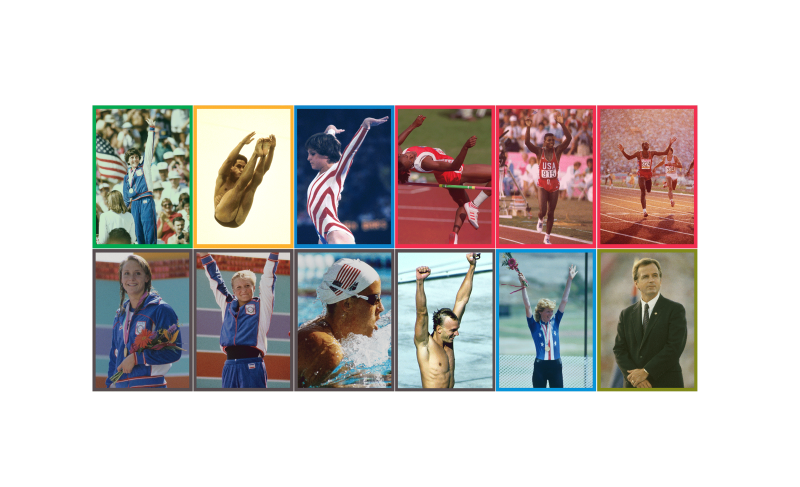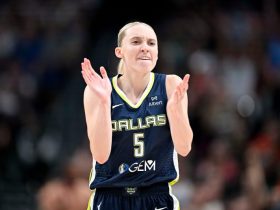From the pool to the track, from the gym to the diving board, the U.S. team shined brightly at the 1984 L.A. Summer Olympics, winning a record 174 medals, 83 of them gold.
The 1984 Olympic medalists emerged from all corners of the U.S., each carrying the unique story of their hometowns to the global stage. The journey of these athletes to Olympic glory is as diverse as the geography they hail from, revealing interesting patterns and insights, according to data analyzed by the Medill News Service.
It’s no surprise that California, with its year-round mild climate and a deep-seated culture of sports, led all states with 72 medal-winning performances. Los Angeles, known for its iconic sports venues and a history steeped in athletic excellence, was the birthplace of 11 medalists, seven gold, including Peter Vidmar, a gold medalist in pommel horse and as a member of the U.S. men’s gymnastics team as well as a silver medalist in the all-around competition.
Unable to view our graphics? Click here to see them.
Swimming, it appears, was and is a sport where American excellence transcends state boundaries. From Rowdy Gaines in Winter Haven, Florida, to Mary T. Meagher in Louisville, Kentucky, the distribution of gold medal swimmers in 1984 paints a picture of a nationwide commitment to the sport. This widespread talent “pool’ was indicative of strong swimming programs and coaching standards across the country. The data suggested that almost every corner of the U.S. had the potential to nurture Olympic-level swimmers.
Beyond the traditional powerhouse cities, certain communities have risen to prominence due to their unique contributions to U.S. Olympic success. Carl Lewis, a native of Birmingham, Alabama, won four gold medals in track and field in ‘84, challenging the notion that only major metropolitan areas produced top athletes. Lewis, one of 40 U.S. athletes to win multiple medals, was competing in his first Olympic Games and eventually compiled nine golds and one silver in four Olympics.
Gymnast Mary Lou Retton, from Fairmont, West Virginia, won five medals including a gold in the all-around and was one of eight ‘84 Olympians to be the sole medal winner from her state.
In 1984, trends pointed to a broadening of talent across the nation. Three-time gold medal swimmer Tracy Caulkins from Winona, Minnesota, and gymnast Julianne McNamara from Flushing, New York, who won a gold and two silvers, magnified how less-heralded cities were becoming notable contributors to the Olympic medal tally.
Equestrian sports and shooting events also highlighted the rural roots of American athletes. At the L.A. Games, Bruce Davidson, who spent his childhood in Westport, Massachusetts and won one gold medal in ‘84 and medals in four Olympics, and Pat Spurgin from Billings, Montana, with one gold, exemplified excellence in equestrian jumping and shooting, respectively.
In all, 290 U.S. athletes made it onto the podium in L.A. in 1984 in a year when 14 Eastern Bloc countries, including the Soviet Union and East Germany boycotted.
“It’s still the Olympic rings; it still holds the same character [no matter] who’s there or not,” said Jacksonville, Florida’s Chandra Cheeseborough, who won two golds and one silver in sprint events in L.A. “So for me, it was nothing different.”






